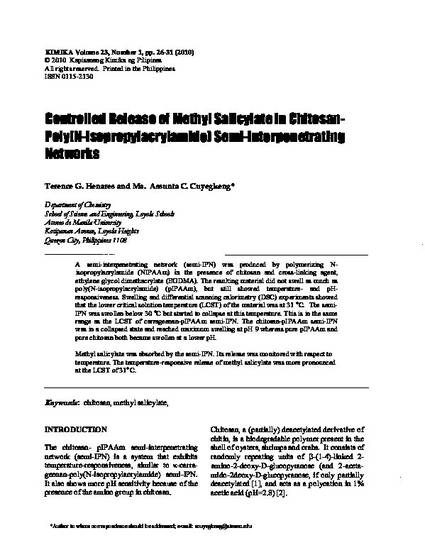
A semi-interpenetrating network (semi-IPN) was produced by polymerizing Nisopropylacrylamide (NIP AAm) in the presence of chitosan and cross-linking agent, ethylene glycol dimethacrylate (EGDMA). The resulting material did not swell as much as poly(N-isopropylacrylamide) (piPAAm), but still showed temperature- and pHresponsiveness. Swelling and differential scanning calorimetry (DSC) experiments showed that the lower critical solution temperature (LCST) of the material was at 31 °C. The semiIPN was swollen below 30 °C but started to collapse at this temperature. This is in the same range as the LCST of carrageenan-piPAAm semi-IPN. The chitosan-piPAAm semi-IPN was in a collapsed state and reached maximum swelling at pH 9 whereas pure piP AAm and pure chitosan both became swollen at a lower pH. Methyl salicylate was absorbed by the semi-IPN. Its release was monitored with respect to temperature. The temperature-responsive release of methyl salicylate was more pronounced at the LCST of31° C.
